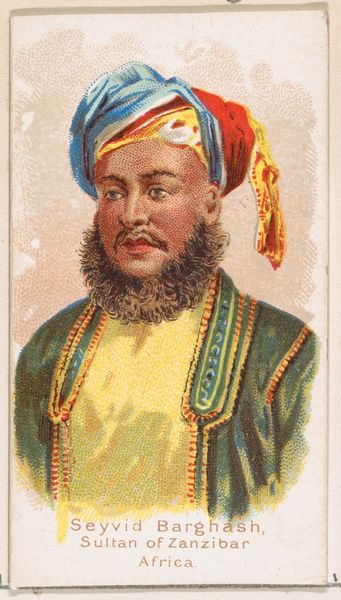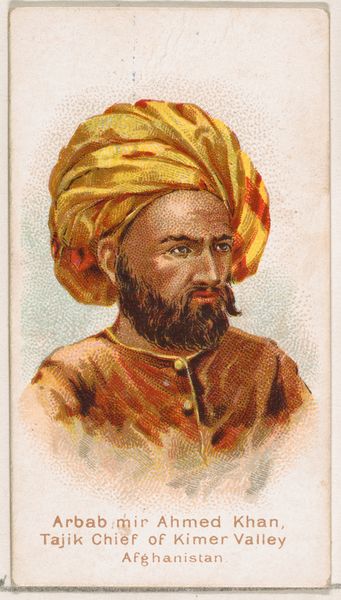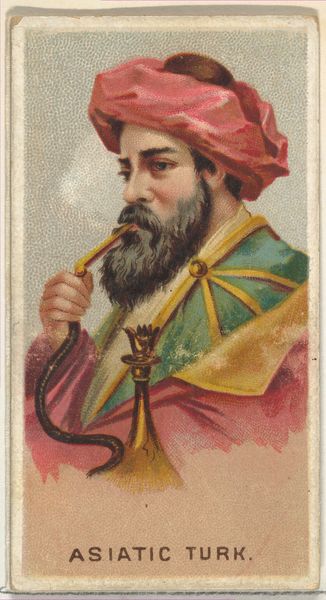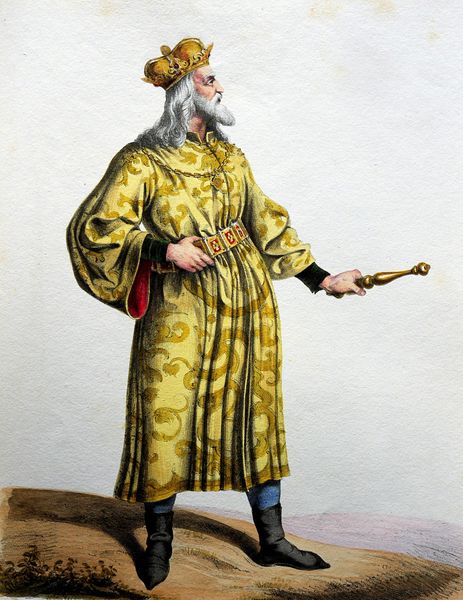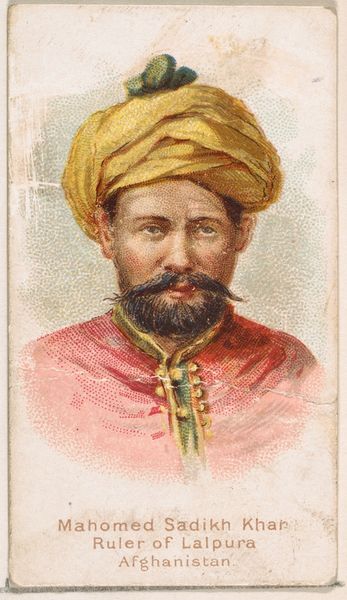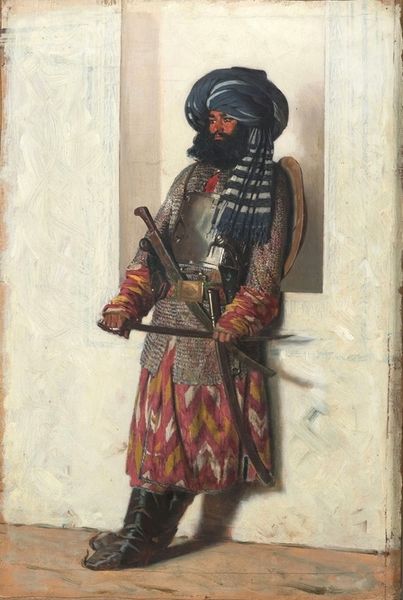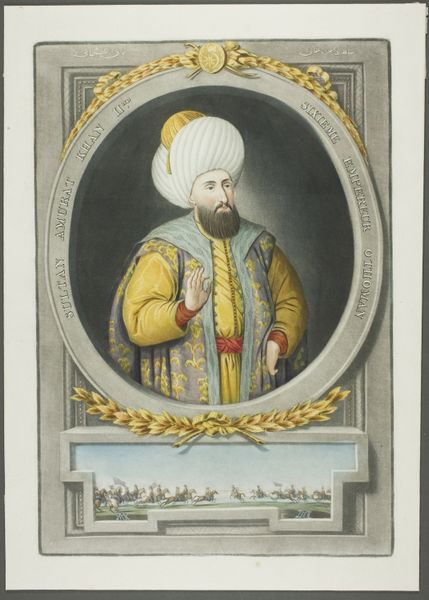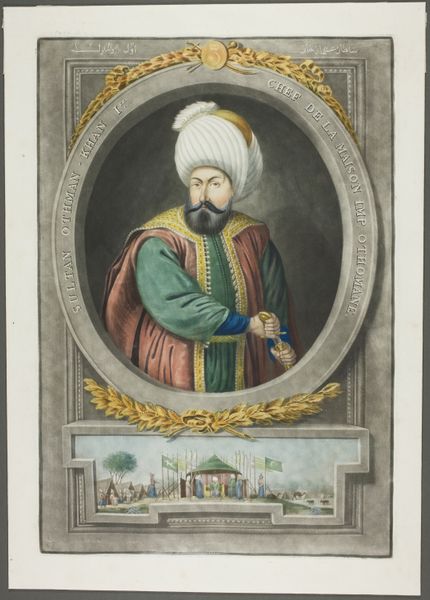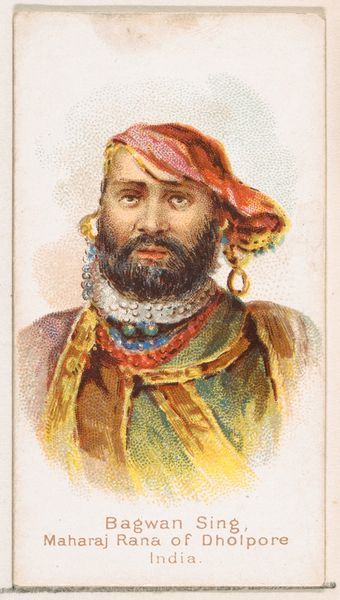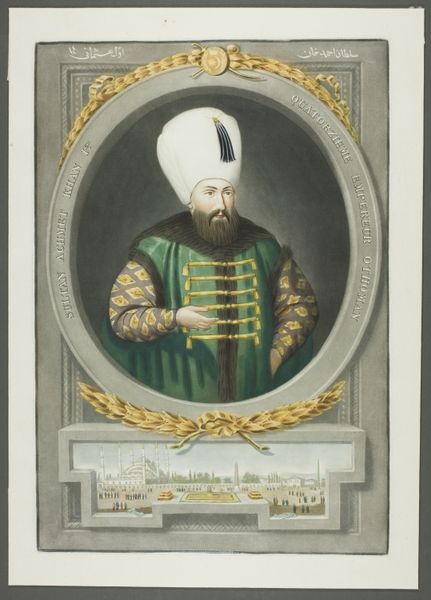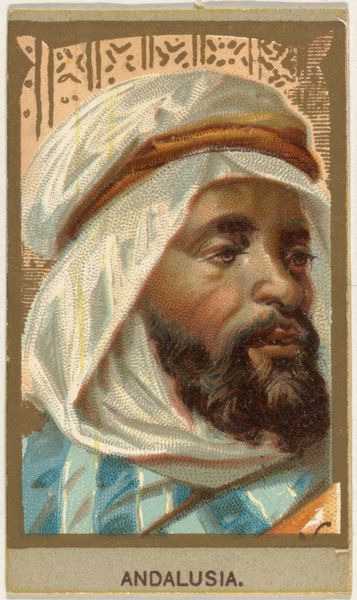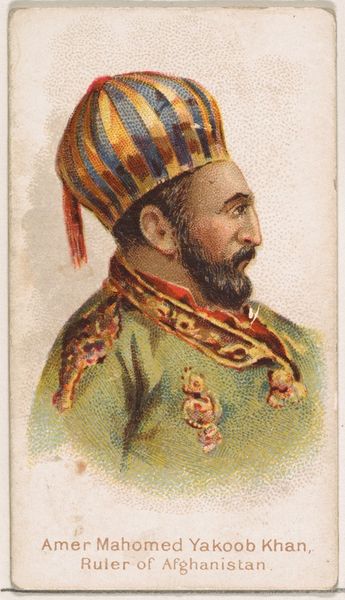
Cimeter, from the Arms of All Nations series (N3) for Allen & Ginter Cigarettes Brands 1887
0:00
0:00
drawing, print
#
portrait
#
drawing
# print
#
caricature
#
oil painting
#
coloured pencil
#
orientalism
#
men
#
genre-painting
Dimensions: Sheet: 2 3/4 x 1 1/2 in. (7 x 3.8 cm)
Copyright: Public Domain
Editor: This striking image seems plucked right from the pages of "One Thousand and One Nights"—what exactly are we looking at? Curator: Indeed! This chromolithograph, titled "Cimeter," hails from the "Arms of All Nations" series produced in 1887 by Allen & Ginter Cigarettes. Editor: Even printed on this scale, the composition really jumps out. The artist uses bright primary hues to create a strong graphic presence, while simultaneously allowing more subdued geometric patterns to function in the background. It’s quite lively and eye-catching. Curator: It's fascinating to consider the intent behind such a piece, given the rise of orientalism at the time. The figure, clearly intended to represent a character of Middle Eastern origin, grasps a distinctive scimitar. These swords symbolized power, honor, and skill in many Eastern cultures, a visual shorthand for the "exotic East". Editor: You know, there’s also a possible parallel with contemporary understandings of branding. Cigarette companies often used such images to lend their brands an air of sophistication and worldliness, promising a sort of vicarious adventure to the smoker. It also reinforced contemporary Western cultural biases regarding the exotic “other.” Curator: Absolutely. Notice, too, the turban. This is far from just a simple head covering. It signified social status, religious affiliation, and even tribal identity in the Ottoman Empire. To the consumer, it reads more as cultural "costume" than a symbol of deep social meaning. Editor: But it all feels so flat, despite its vibrancy, like a theater backdrop instead of a lived-in space. The image thus presents this "other" culture, but keeps it safely at a distance for its consumers. The technique is at odds with the narrative content. Curator: That push-pull is telling, isn’t it? The romanticized presentation served a purpose, exoticizing the subject for profit and playing into the imperial mindset so common in the period. Editor: I suppose we see a reflection of consumer culture embedded within this type of ephemera: desires, biases, marketing all swirl together within a single print. Curator: Precisely. It’s a concentrated lens onto a specific moment in time.
Comments
No comments
Be the first to comment and join the conversation on the ultimate creative platform.
